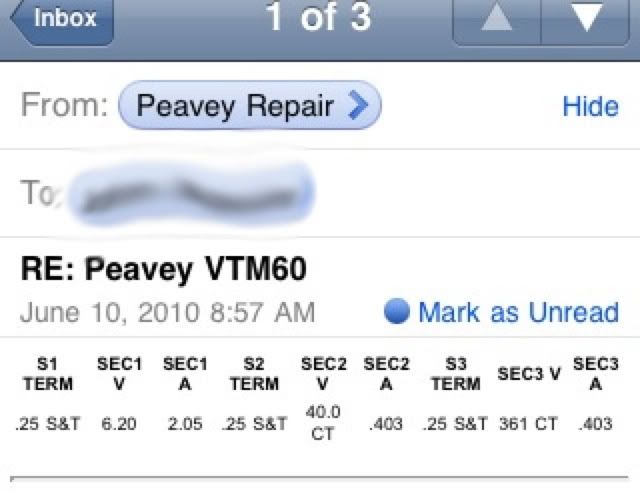Hey all. I've been modding my VTM quite a bit the last few months.
I think it's finally time for me to make the switch to EL34s.
Here's a list of specs on the PT that I got from a Peavey representative.

Not really what all that means....
But I've heard of people modding their VTMs to take EL34s and they never talk about changing the PT.
Also, I've nodded mine to have a bias pot. Right now it's at 33mA.
VTM schematic:
http://www.schematicheaven.com/newam...vy_vtm_120.pdf
Let me know if you need to know anything else.
I think it's finally time for me to make the switch to EL34s.
Here's a list of specs on the PT that I got from a Peavey representative.

Not really what all that means....
But I've heard of people modding their VTMs to take EL34s and they never talk about changing the PT.
Also, I've nodded mine to have a bias pot. Right now it's at 33mA.
VTM schematic:
http://www.schematicheaven.com/newam...vy_vtm_120.pdf
Let me know if you need to know anything else.

Comment